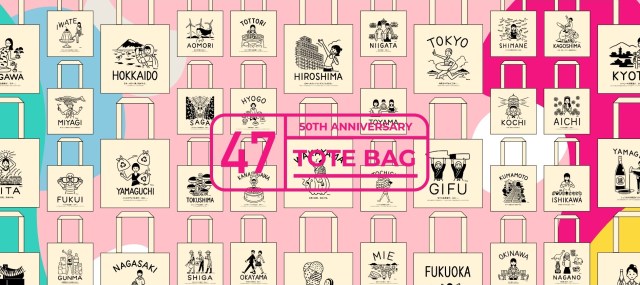
Cute designs teach us which prefecture of Japan grows the most bonsai trees and which has the most Shinto shrines.
You can find branches of Daiso, Japan’s most popular 100 yen shop, in every prefecture in Japan. And as of this month, you can also find every prefecture in Japan in Daiso.
On November 4, Daiso began selling a series of 47 shoulder tote bags, one for each of Japan’s prefectures. Each features a charming illustration by artist Yutanpo Shirane that represents the region, but quite possibly not for the reason most people expect.
For example, yes, Hokkaido and Okinawa are, respectively, Japan’s coldest and warmest parts, which is why the people on their bags are dressed the way they are. But what the drawings are really meant to illustrate is that Hokkaido is where you’ll find Japan’s largest uninhabited island (Ashima Oshima), and that Okinawa has the country’s highest birth rate.
Likewise, sure, Akita Prefecture is where the Akita dog breed comes from, but the reason this pooch is sleeping isn’t just because it’s cute, but because residents of Akita statistically sleep longer than anyone else in Japan.
Some of the trivia is pretty common knowledge, like how Gifu, which used to be a center for swordsmiths, now makes the largest share of Japan’s cooking knives…
…but did you know that Miyazaki is where the largest amount of bokuto, wooden martial arts practice swords, are crafted?
Similarly, Osaka topping the nation in takoyaki (otcopus dumpling) consumption isn’t a surprise…
…but how about Saitama, Tokyo’s neighbor to the north that’s often saddled with a reputation as a dull, nondescript place, being Japan’s biggest ice cream producer?
Speaking of Tokyo, it’s distinction is also surprising: it’s the earliest prefecture to officially open its beaches for swimming, because the sparsely populated Ogasawara Islands, the southernmost points of Japan, are classified as part of Tokyo.
Other featured facts include Yamanashi having Japan’s oldest living sakura cherry blossom tree, Niigata having the most Shinto shrines, Kagawa being the biggest producer of bonsai trees, and Hiroshima having the country’s biggest jungle gym.
The bags are priced at just 100 yen, and is made from 56-percent recycled fibers. Each bag is for sale only within the prefecture it represents, with purchases limited to three per customer, giving us all a little extra incentive to head to the next prefecture over and make our own little discoveries about the different parts of Japan.
Source: Daiso, PR Times
Top image: Daiso
Insert images: PR Times, Daiso
● Want to hear about SoraNews24’s latest articles as soon as they’re published? Follow us on Facebook and Twitter!
[ Read in Japanese ]
Follow Casey on Twitter, where he wants the San Dimas Daiso to get its own bag now too.
[ Read in Japanese ]

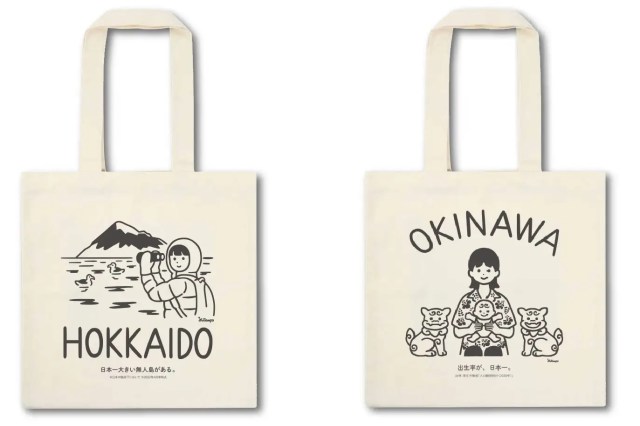
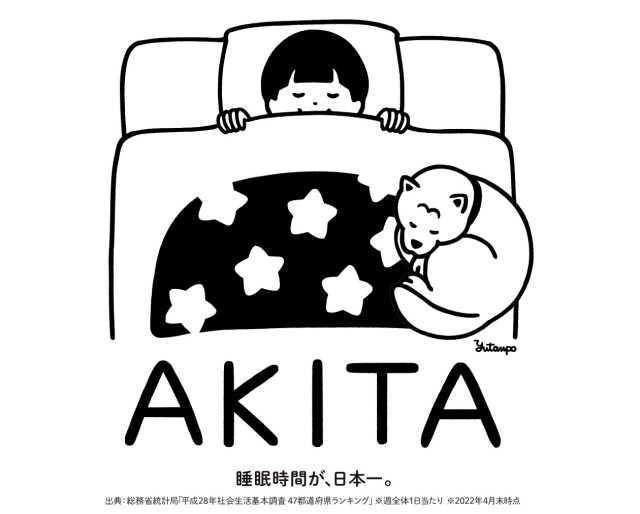
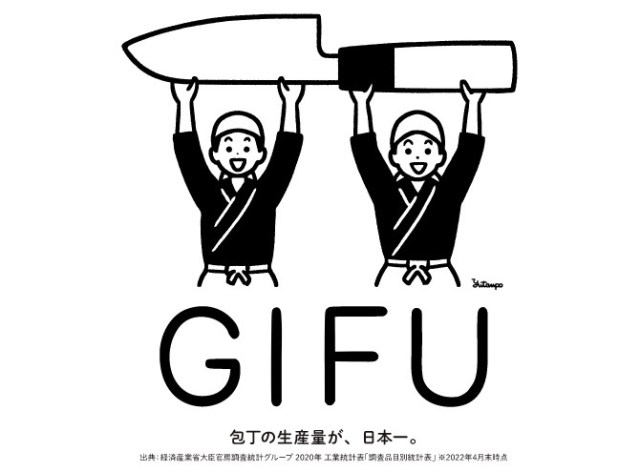
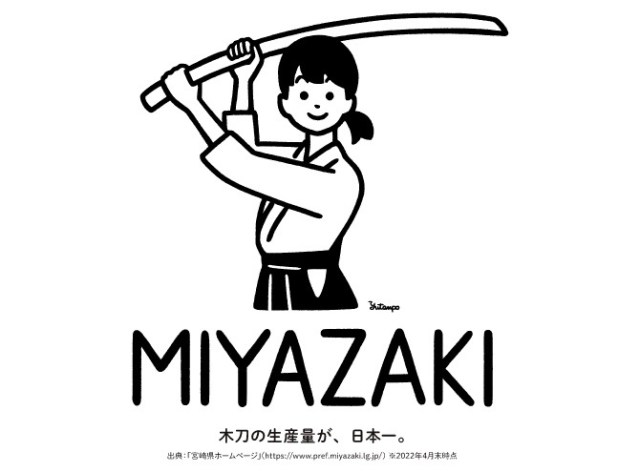
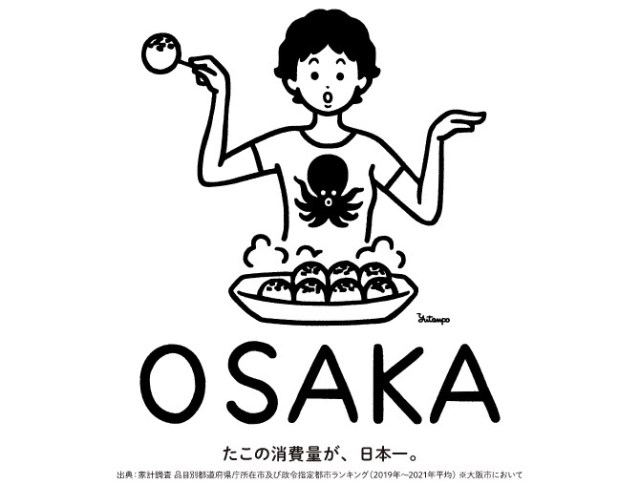
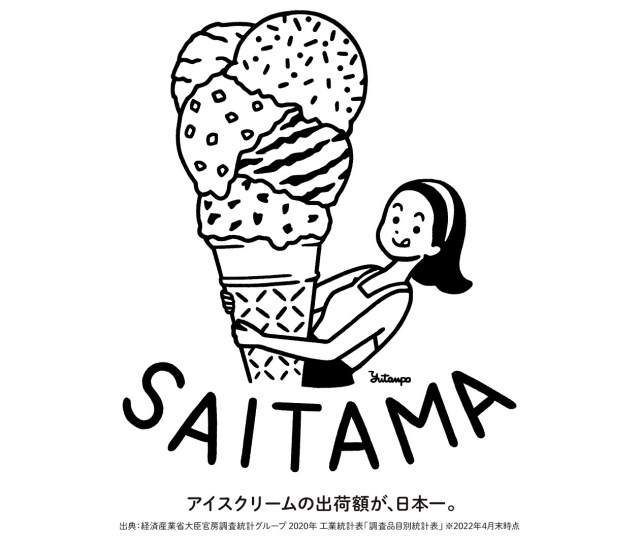
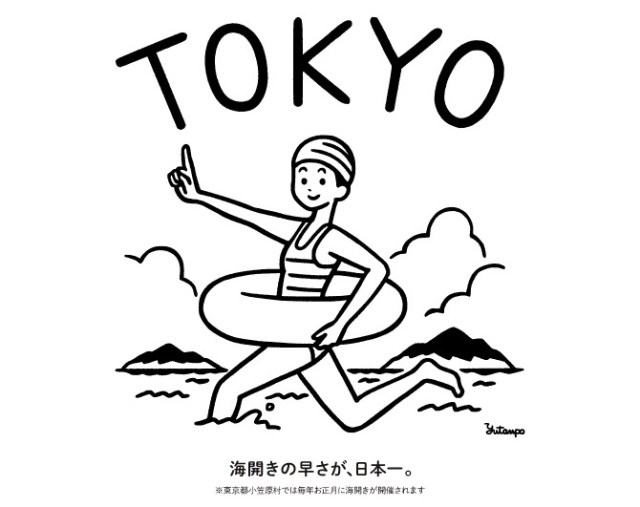
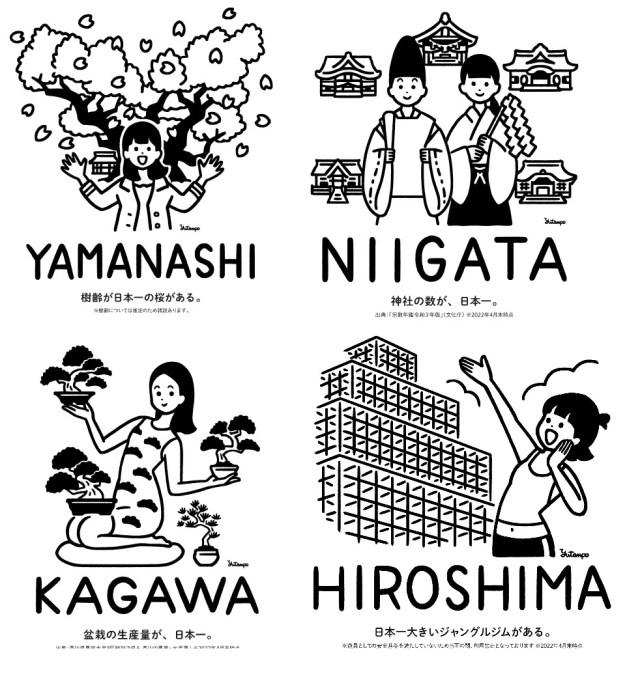
 A visit to the largest Daiso 100 yen shop in all Japan【Photos】
A visit to the largest Daiso 100 yen shop in all Japan【Photos】 100 yen store chain Daiso opens online shop with 30,000 items to choose from!
100 yen store chain Daiso opens online shop with 30,000 items to choose from! Japan has too many adorable Akita dog license plate designs, needs help picking just one
Japan has too many adorable Akita dog license plate designs, needs help picking just one Japan’s new manhole cover T-shirts let you show off your local prefectural pride
Japan’s new manhole cover T-shirts let you show off your local prefectural pride What’s the best spoon for Japanese curry?【Photos】
What’s the best spoon for Japanese curry?【Photos】 Japan’s new difficult-to-drink-from beer glass protects your liver, but it’s a brutal experience
Japan’s new difficult-to-drink-from beer glass protects your liver, but it’s a brutal experience Demon Slayer: Kimetsu no Yaiba gets new roller coaster attractions and food at Universal Studios Japan
Demon Slayer: Kimetsu no Yaiba gets new roller coaster attractions and food at Universal Studios Japan How to order snacks on a Shinkansen bullet train in Japan
How to order snacks on a Shinkansen bullet train in Japan New samurai glasses are Japan’s latest weird must-have souvenir
New samurai glasses are Japan’s latest weird must-have souvenir Hello, cosmetics! Clinique teams up with Hello Kitty this summer for first-time collaboration
Hello, cosmetics! Clinique teams up with Hello Kitty this summer for first-time collaboration High-fashion Totoro cuddle purse is like an elegant stroll in the forest【Photos】
High-fashion Totoro cuddle purse is like an elegant stroll in the forest【Photos】 Burger King Japan suddenly adds Dr. Pepper and Dr. Pepper floats to its menu nationwide
Burger King Japan suddenly adds Dr. Pepper and Dr. Pepper floats to its menu nationwide New Nintendo Lego kit is a beautiful piece of moving pixel art of Mario and Yoshi【Photos】
New Nintendo Lego kit is a beautiful piece of moving pixel art of Mario and Yoshi【Photos】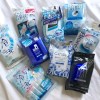 Japan’s cooling body wipe sheets want to help you beat the heat, but which work and which don’t?
Japan’s cooling body wipe sheets want to help you beat the heat, but which work and which don’t? Nintendo history you can feel – Super NES, N64, and GameCube controllers become capsule toys
Nintendo history you can feel – Super NES, N64, and GameCube controllers become capsule toys “The most Delicious Cup Noodle in history” – Japan’s French Cup Noodle wins our heart【Taste test】
“The most Delicious Cup Noodle in history” – Japan’s French Cup Noodle wins our heart【Taste test】 Starbucks releases a cute Frappuccino and Unicorn Cake…but not in Japan
Starbucks releases a cute Frappuccino and Unicorn Cake…but not in Japan Kyoto Tower mascot termination reveals dark side behind cute Japanese characters
Kyoto Tower mascot termination reveals dark side behind cute Japanese characters McDonald’s Japan’s Soft Twist Tower: A phantom ice cream only sold at select branches
McDonald’s Japan’s Soft Twist Tower: A phantom ice cream only sold at select branches Yabai Ramen: What makes this Japanese ramen so dangerous?
Yabai Ramen: What makes this Japanese ramen so dangerous? Finally! Nintendo Japan expands Switch 8-bit controller sales to everybody, Online member or not
Finally! Nintendo Japan expands Switch 8-bit controller sales to everybody, Online member or not Japanese government wants to build luxury resorts in all national parks for foreign tourists
Japanese government wants to build luxury resorts in all national parks for foreign tourists To combat declining birth rate, Japan to begin offering “Breeding Visas” to foreigners
To combat declining birth rate, Japan to begin offering “Breeding Visas” to foreigners 10 things you should buy at 7-Eleven in Japan
10 things you should buy at 7-Eleven in Japan Studio Ghibli releases anime heroine cosplay dresses that are super comfy to wear
Studio Ghibli releases anime heroine cosplay dresses that are super comfy to wear Woman charged for driving suitcase without a license in Osaka
Woman charged for driving suitcase without a license in Osaka Studio Ghibli unveils My Neighbour Totoro miniature house model
Studio Ghibli unveils My Neighbour Totoro miniature house model Kyoto experiencing problems with foreign tourists not paying for bus fares, but not on purpose
Kyoto experiencing problems with foreign tourists not paying for bus fares, but not on purpose Fighting mild hunger with a Japanese soda that turns into jelly in the stomach【Taste test】
Fighting mild hunger with a Japanese soda that turns into jelly in the stomach【Taste test】 Studio Ghibli’s Howl’s Moving Castle tapestry unveiled in Japan for first time
Studio Ghibli’s Howl’s Moving Castle tapestry unveiled in Japan for first time McDonald’s new Happy Meals offer up cute and practical Sanrio lifestyle goods
McDonald’s new Happy Meals offer up cute and practical Sanrio lifestyle goods Sales of Japan’s most convenient train ticket/shopping payment cards suspended indefinitely
Sales of Japan’s most convenient train ticket/shopping payment cards suspended indefinitely Sold-out Studio Ghibli desktop humidifiers are back so Totoro can help you through the dry season
Sold-out Studio Ghibli desktop humidifiers are back so Totoro can help you through the dry season Japanese government to make first change to romanization spelling rules since the 1950s
Japanese government to make first change to romanization spelling rules since the 1950s Foreigner’s request for help in Tokyo makes us sad for the state of society
Foreigner’s request for help in Tokyo makes us sad for the state of society Ghibli founders Toshio Suzuki and Hayao Miyazaki contribute to Japanese whisky Totoro label design
Ghibli founders Toshio Suzuki and Hayao Miyazaki contribute to Japanese whisky Totoro label design Doraemon found buried at sea as scene from 1993 anime becomes real life【Photos】
Doraemon found buried at sea as scene from 1993 anime becomes real life【Photos】 Tokyo’s most famous Starbucks is closed
Tokyo’s most famous Starbucks is closed Princesses, fruits, and blacksmiths: Study reveals the 30 most unusual family names in Japan
Princesses, fruits, and blacksmiths: Study reveals the 30 most unusual family names in Japan Japanese breast size study shows rapid growth in previously smallest-busted region of county
Japanese breast size study shows rapid growth in previously smallest-busted region of county Daiso will help you warp your reflection with a psychedelic infinity mirror for under five bucks!
Daiso will help you warp your reflection with a psychedelic infinity mirror for under five bucks! We love Daiso, but sometimes the weird products just amuse us
We love Daiso, but sometimes the weird products just amuse us We test Daiso’s new storage container to see if it keeps rice fluffy even after freezing
We test Daiso’s new storage container to see if it keeps rice fluffy even after freezing Daiso’s Standard Products store — what’s worth buying and what’s not? Our expert weighs in
Daiso’s Standard Products store — what’s worth buying and what’s not? Our expert weighs in When do Japanese women have their first kiss? Survey finds gap between different parts of Japan
When do Japanese women have their first kiss? Survey finds gap between different parts of Japan The shit didn’t hit the fan, it IS the fan – Testing Daiso’s 100-yen Handy Poo Fan
The shit didn’t hit the fan, it IS the fan – Testing Daiso’s 100-yen Handy Poo Fan Online survey sheds light on prefectural personality rankings of Japanese people
Online survey sheds light on prefectural personality rankings of Japanese people Government bear attack warning poster in Japan may be too cute for its own good
Government bear attack warning poster in Japan may be too cute for its own good Daiso sells “emergency shelters,” and they have an amazing visual trick【Photos】
Daiso sells “emergency shelters,” and they have an amazing visual trick【Photos】 Halloween lashes from the 100 yen store will add a bit of spook to your eyes
Halloween lashes from the 100 yen store will add a bit of spook to your eyes What to buy at Daiso’s new Standard Products store in Tokyo
What to buy at Daiso’s new Standard Products store in Tokyo Japan’s foreign population reaches historic milestone following largest-ever single-year surge
Japan’s foreign population reaches historic milestone following largest-ever single-year surge Half of 7-Elevens in Japan to start selling 100-yen Daiso products this month
Half of 7-Elevens in Japan to start selling 100-yen Daiso products this month Kansai area people more genetically predisposed to liking coffee than elsewhere in Japan
Kansai area people more genetically predisposed to liking coffee than elsewhere in Japan Are 100-yen shop Daiso’s gel nail polish strips a good dupe for salon quality nails? Let’s find out
Are 100-yen shop Daiso’s gel nail polish strips a good dupe for salon quality nails? Let’s find out
Leave a Reply